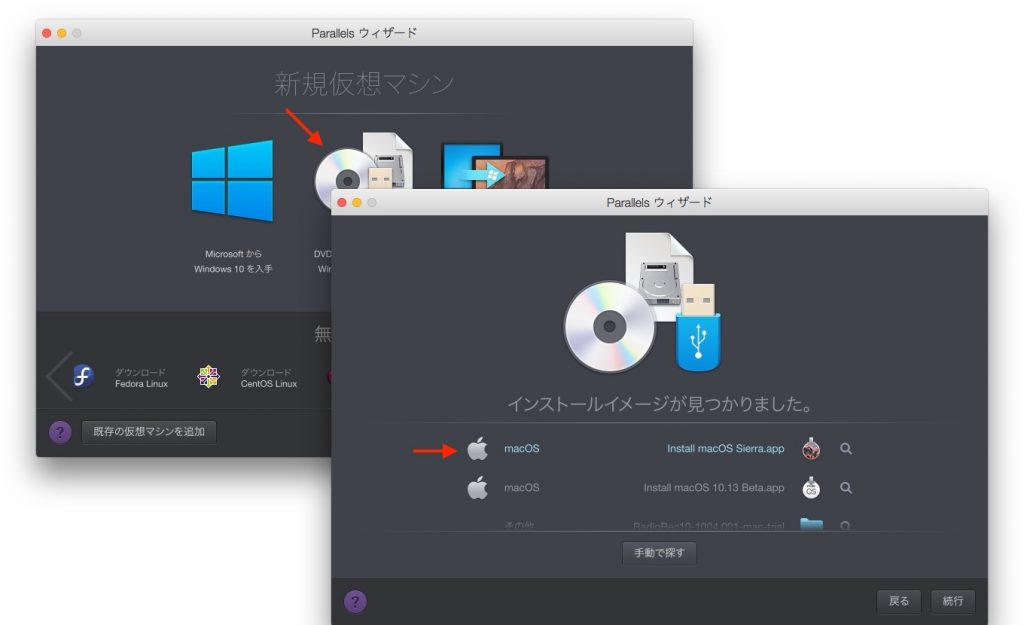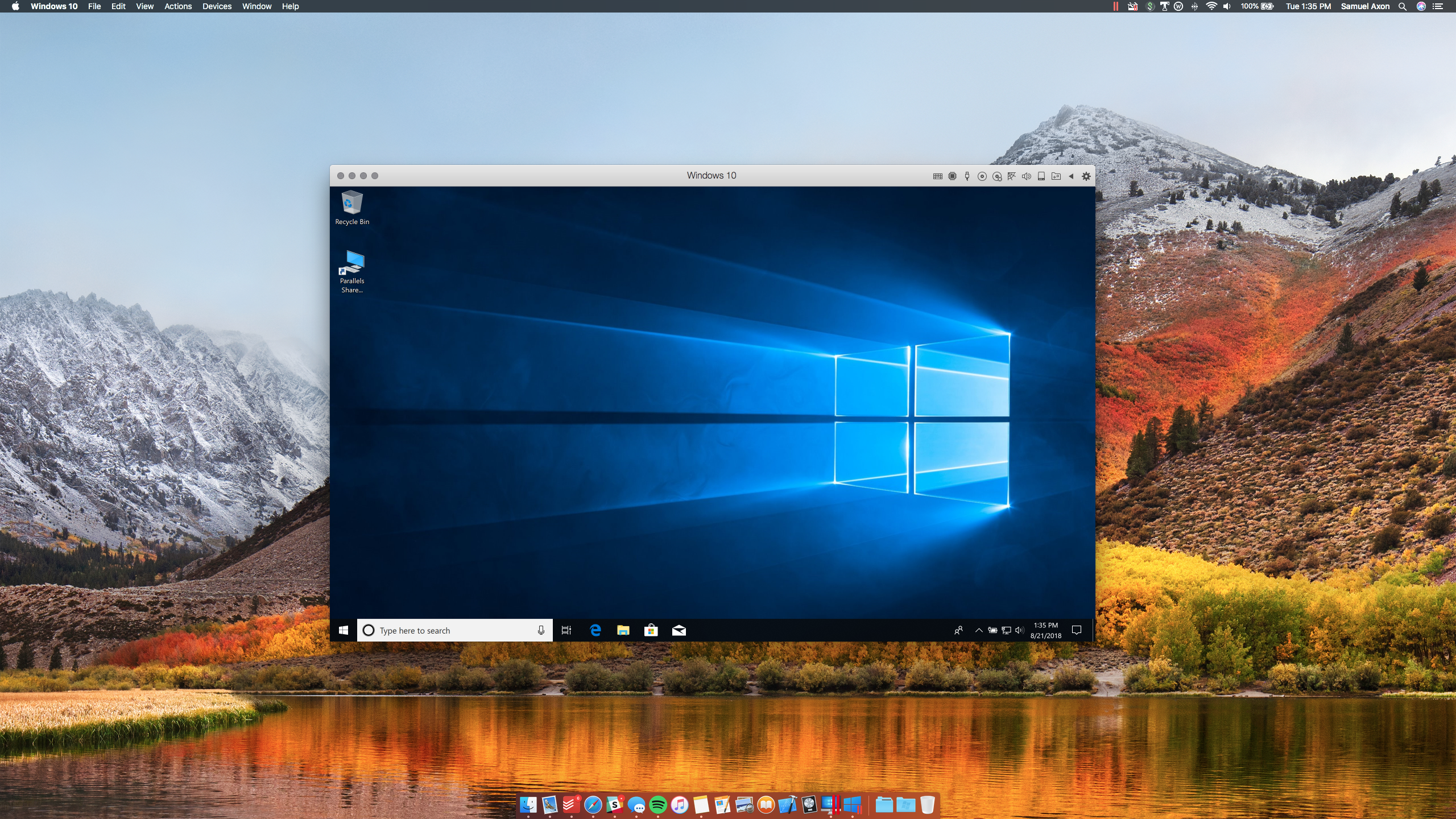Parallels For Mac 12 High Sierra
I have been testing Jamf Pro policies using Mac VMs for about 2 years. This has worked really well for me. The only policies that I cannot test using a VM are polices that require the use of a physical Mac, such as deploying FileVault via Self Service. When I bought my first Intel Mac in 2006, I bought Parallels Desktop. Since then, I have upgraded to every new version of Parallels. I have worked with VMware, and I think it’s a great product. If it existed at the time, I just didn’t know about it back in 2006. I thought about moving to VMware a few years ago, but I never had the incentive to do it. When Jamf Pro 10.3 was released, I could no longer enroll a Mac VM running macOS High Sierra. Doing so would either result in a “Profile installation failed” error, or if I used a quick-add package, the installation would fail. We now need a Mac VM that has a valid model ID, and we should have a serial number for the VM. This is why enrollment fails. Jamf Support sent me this article on how to create a VM for Jamf Pro policy testing.
From what I understood from this article, I needed VMware to get this to work. Since I did not want to invest in two new VMware licenses (one for my MacBook Pro, and another for my iMac), I did some searching to find out if it’s possible to change the serial number and model ID of a Parallels Mac VM.
Parallels Toolbox 2.0: Parallels Toolbox, first introduced last year, is a Mac application that lives in your Menu Bar and provides quick access to a bunch of useful functions and utilities, such.
The Parallels knowledge base has this article for changing the serial number:
And this article for changing the model ID:
To make the necessary changes, we need to right-click the VM from the list, and select Configure. Next, we go to Hardware - Boot Order, and then open Advanced Settings. In the Boot flags field, we enter the text strings that define the serial number of the VM, and the model. Close the configuration window when finished. Boot up the VM, and check System Profiler to make sure that the new serial number and model are there.
I took the serial number of the host Mac, and changed one digit to create a new serial number, and I entered that into the text string. I then copied the model ID of the host Mac into the next text string. After making these changes, I booted up the VM, and saw my changes when I launched System Profiler.
I was then able to enroll my macOS High Sierra VMs into Jamf Pro using the enrollment URL after following this process.
I’m not sure how many people here use Parallels instead of VMware, but I hope this helps anyone facing the same dilemma I was. This requires Parallels Desktop Pro or Parallels Desktop Business.
It’s that time of year—iPhone pre-order season, and the release of a new macOS. Just like the new iPhone X, this year’s macOS release has IT administrators excited, as well as nervous. This year, there is ample reason to be excited, with the release of Apple File System (APFS). If you have not yet heard about the new file system, Apple’s web site has more detailed information.

Parallels Mac Management for Microsoft SCCM customers have been asking about compatibility with APFS since it was first rumored. As the API keeps evolving, it was uncertain what the final release would look like, but now we are able to answer questions and share some great news.
Parallels Mac Management v6.1
In early October, we plan to release Parallels Mac Management v6.1. This release will officially support macOS High Sierra 10.13. You can expect Parallels Mac Management to work seamlessly with macOS High Sierra, with just a few limitations:
- In rare cases, a Mac may not be able to NetBoot a macOS image; you may see a blank screen at the end of the boot sequence. We are investigating the issue and will update users with more information as soon as it is available.
- The Format and Partition Disk task sequence step has limited support for APFS.
- The following OSD scenarios are supported by Parallels Mac Management v6.1:
- Apply macOS High Sierra 10.13 to a Mac that has already upgraded to 10.13, without re-partitioning
- Format and partition, then apply macOS High Sierra 10.13 with implicit conversion to APFS
Parallels Mac Management Releases Prior to v6.1
Releases prior to v6.1 are not officially supported on macOS High Sierra. If you need to manage macOS High Sierra devices you must upgrade to Parallels Mac Management 6.1 (or newer). At the time of writing, we are aware of the following compatibility issues with macOS High Sierra:

- Not able to create a boot image from a Mac with macOS High Sierra installed
- Not able to create a system image from an APFS volume
- No APFS support in the Format and Partition Disk task sequence step
- Not able to enable FileVault2 on an APFS volume
- If during macOS upgrade the encrypted disk is convert to APFS, the recovery key will not be shown in the Mac device resource properties (the key will not be lost, only not shown)
- Not able to enroll a Mac with macOS High Sierra installed in the Apple Device Enrollment Program (DEP)
Download Parallels Mac Management v6.1
Parallels Mac Management v6.1 will be available in early October. If you have an active license you can visit the Parallels site to download the most current version.
Mac 11 For Sale
Feedback
Parallels For Mac Pro
If you would like to suggest a feature, please post your ideas in the Feature Suggestions Forum.